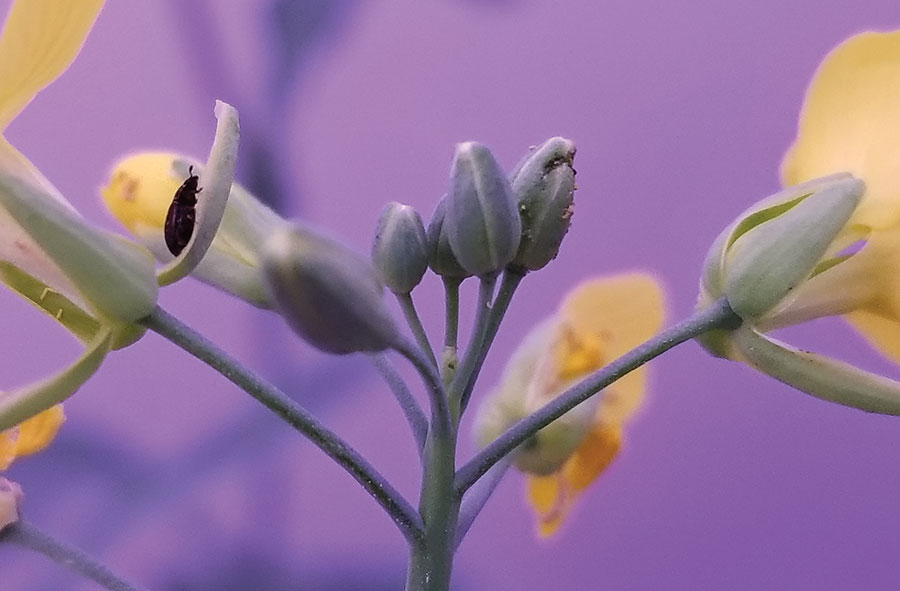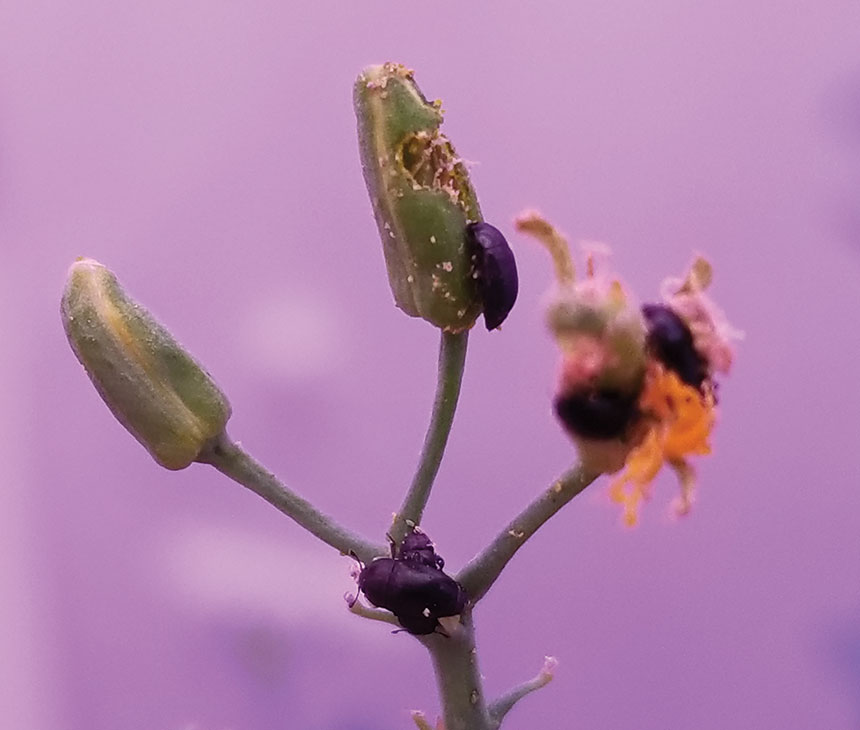Testing thresholds and insecticides for pollen beetle
Key result:
Pollen beetles were susceptible to three of four insecticides tested. Yield reduction was detected at seven to nine beetles per plant, but not at four beetles per 10 sweeps. Pollen beetles were not detected in the Prairies and no native parasitoids were found attacking pollen beetle larvae in Atlantic Canada.
Project title, principal investigator:
“Generate knowledge and control strategies for the pollen beetle Brassicogethes viridescens (Coleoptera: Nitidulidae), a new invasive pest of canola” Christine Noronha, AAFC Charlottetown
Funding:
SaskCanola, Alberta Canola, Manitoba Canola Growers
Full report:
To find the full report, go to the Canola Research Hub at canolaresearch.ca
and search for the project title.

Pollen beetles are an invasive pest of canola. Originally from Europe, the beetle is found in Atlantic Canada and Quebec. Climate models show a high potential for it to migrate to Western Canada where canola is a major crop.
Pollen beetles look similar to flea beetles. Adults feed on pollen, which in itself will reduce fertilization of flowers. Adults also lay eggs in buds, and hatching larvae feed on buds. Both adult and larval feeding will result in pod abortion. They have only one generation per year.
The lack of basic management information about this invasive pest prompted this research project. The main objectives were to determine an economic threshold and to evaluate the efficacy of insecticides less toxic to bees, since this pest is found feeding and laying eggs when the crop is in bloom. The canola crop in Alberta, Saskatchewan and Manitoba was monitored for presence of this pest.
To determine the economic threshold, researchers conducted trials within field cages to eliminate the influence of other insect pests on yield. Wild bees were placed in the cage for pollination. Plant samples were also collected from outside the cages to compare the influence of other pests on yield. Researchers also conducted sweep net sampling, a common method used for sampling canola, to determine population levels in 2021. They related sweep net counts to damage.

Results
Researchers found that a threshold of seven to nine beetles per plant can cause significant yield loss in the absence of other pests. Sweep net sampling in 2021 showed that in the presence of other pests an average of four beetles per sweep gave 18 per cent pod loss.
This project also showed that three insecticides with reduced risk to bees were efficacious at the low rate. This makes the two or more applications generally required to control pollen beetles a more feasible option. The lack of native parasitoids indicates that evaluation of biocontrol agents from Europe should be considered.
Although pollen beetles were not discovered on the Prairies, continued vigilance is recommended.





